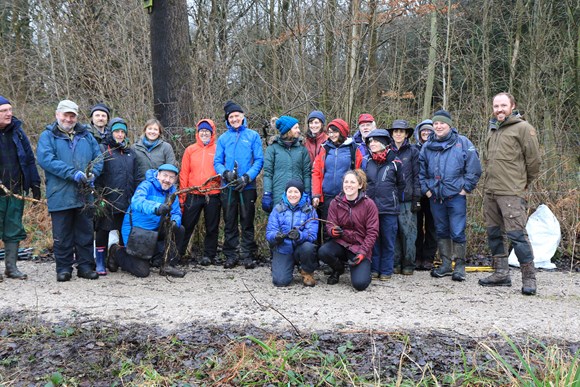As nature’s crisis deepens, with one in six species across the UK at risk of extinction, an ambitious mission to reintroduce 10 threatened animals and plants in south Cumbria celebrates unprecedented successes.
University of Cumbria’s three-year, £2-million BOOM (Back On Our Map) project draws to a close this week and its advances hailed as a victory for wildlife.
Delivered alongside Morecambe Bay Partnership and supported by The National Lottery Heritage Fund, manager Jo Sayers said it had shown funding could result in significant gains.
She added: “We are confident that much of what we have achieved will continue way into the future, with partners and volunteers carrying on our work.
“BOOM has returned hazel dormice to woodlands on the Cumbrian/Lancashire border, with a dedicated group of 28 helpers, and reintroduced a new colony of the country’s tiniest butterfly – the small blue.
“We brought extremely rare plants on the brink of survival back to former strongholds, including extinct goldilocks aster, now in Cumbria for the first time since 2007, and encouraged passionate new conservationists.
“Volunteers were our backbone, more than 150 of them, putting in 12,000 hours over 1,700 days and have done everything from feeding dormice to establishing habitats and growing fly-catching sundews on windowsills.
“Reaching out to those with limited outdoor experiences, there’s been extensive involvement with men from HMP Haverigg, communities in Barrow, mental health charity Mind in Furness and young people with learning difficulties from Beaumont College, Ulverston.
“Impacts on health and wellbeing, as well as changing attitudes, have been remarkable.”
Landowners, foresters, vets and ecologists worked towards the return of pine martens to help woodland ecosystems and red squirrel populations. The first translocation from Scotland is planned under licence in autumn.
Ms Sayers added: “It’s been about community and partnership working and results speak for themselves.
“Over 4,600 aspen trees were planted, 6,000 cowslips established for butterfly food, university students gained unique opportunities and permanent jobs, prisoners achieved coveted John Muir Awards, pledging to work for nature after release.
“We leave this legacy with great pride, but mindful of how much more needs to be done. The will is there, but it has to be backed by financial commitment.”
Helen Featherstone, director, England, North at The National Lottery Heritage Fund said: “This project is a wonderful example of how collaborative work can bring communities together, further a sense of pride in place and have a positive impact on the natural environment around us.
“It’s fantastic to know that, thanks to money raised by National Lottery players, the University of Cumbria and its partners have ensured the safeguarding of our natural heritage in south Cumbria for future generations.”
BOOM’s academic lead, Professor Ian Convery, said the project had shown biodiversity loss could be reversed.
He added: “It was innovative, directly involving communities in decision-making for species restoration and translocation.
“This resulted in local people, and many others not normally involved in conservation, becoming an integral part of the successes.”
BOOM video: https://bit.ly/3RqqTwH








